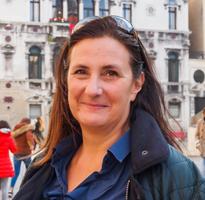While the towns of Sicily's east coast were mostly carved and perfected by the Romans and Greeks thousands of years ago, the towns spreading west to the centre of the main island show more evidence of Norman and Moorish influences and were largely rebuilt following natural disasters in more recent centuries. The white stone hill towns of the south east, most notably Modica, Noto and Ragusa, are central to the popular Inspector Montalbano television series. The baroque churches and cobbled streets are obvious highlights of any trip to this corner of Sicily. They can be visited on a day trip from Syracuse, Taormina or one of the southern coastal resorts but to get the full flavour it is worth braving the town traffic and staying in a central hotel; Modica's Palazzo Failla, run by the family of the same name, would be our first choice.
Driving through Sicily is one of the island's simple pleasures, although it can require steely nerves and considerable patience. For those who prefer to let someone else take the strain, we can arrange a driver and guide who will not only whisk you across the countryside, but will illuminate the journey with fascinating local information. Whoever is behind the wheel, travellers crossing the island should take a break in the Norman city of Piazza Armerina. Right in the middle of Sicily and close to the main roads which bisect the island in both directions, the UNESCO-preserved mosaics of the 2000-year-old Villa del Casale are worth the stop alone.
The jewel in the crown of Sicily's south coast is the Valley of the Temples, a row of ancient Greek temples in astonishingly good condition, on a ridge outside the town of Agrigento. The doric temples at each end of the cypress-fringed ridge, thought to be dedicated to goddesses Juno and Concordia, are the highlights, but there are many more columns and remains to be seen. Our guide was able to bring the shells of these once great buildings to life and link the history of ancient Akragas, as the Greeks called the settlement, to the modern day city while explaining the significance of each edifice and the intermediate defensive walls which afford expansive views towards the sea just a mile away. A tour is essential. It is worth climbing the steep streets of the town of Agrigento itself as well to see the two 1000-year-old churches and a very good archaeological museum covering the Greek site and many finds from earlier eras.
Heading north through rolling hills along the sweeping, well-maintained motorway, the road eventually leads to Monreale, a southern suburb of the island's capital, Palermo. The Norman cathedral here is thought to be the best remaining example of Norman architecture anywhere. The vaulted interior has vast golden mosaics, bronze gates and marble arches, all in excellent condition. It is possible to climb to the roof terrace and look out over Palermo to the distant sea, some 10 miles away.
The final leg of our journey took us into Palermo itself, built and rebuilt by every generation since the Phoenicians. With such a huge array of influences over the last three millennia, the city is as difficult to define as it is to drive through - and even harder to forget. You will find Baroque, Norman and Arabesque architecture and the largest opera house in Italy, but the most authentic side of the city is found in its street markets, cafes and bars. A lot of Sicily's food relies on the right combination of simple ingredients - lemons, aubergines, anchovies and tomatoes are in most meals - ripe, fresh and full of flavour imbued by the hot Sicilian sun. Palermo's cuisine adds more cosmopolitan elements, to reflect its varied history. The arancini (deep-fried risotto balls) with saffron and the cazzini (potato croquettes, also deep-fried) are both found all over the capital, as are less-known dishes involving octopus and parts of cows normally overlooked in British cuisine. My personal favourite, the cannoli (creamy ricotta wrapped in fried pastry) are a must to end every meal - and made for a suitable final treat before leaving Palermo.































